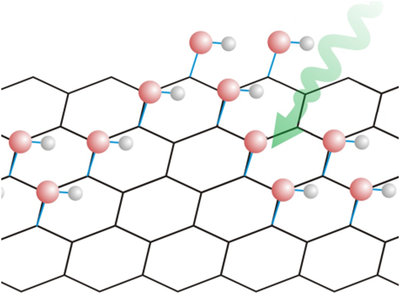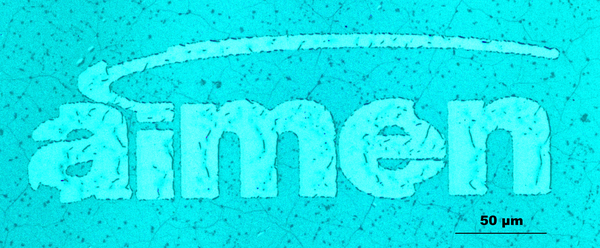Lasers tailor graphene for new electronics technology

Carbon nanomaterials display extraordinary physical properties, outstanding among any other substance available, and graphene has grown as the most promising material for brand-new electronic circuitry, sensors and optical communications devices. Graphene is a single atom-thick sheet of honeycomb carbon lattice, with unique electronic and optical properties, which could bring a new era of fast, reliable, low power communication and information processing.
But two problems hinder graphene´s uptake in real world electronics. There is no large-scale technology to control its properties, and the traditional technology used for silicon-based processors (solid state) is not suitable for graphene processing (molecular material).
The researchers from Technological Center AIMEN explore the use of ultrafast lasers as tools for graphene processing. The laser beam can be focused precisely to tailor the properties of graphene films in finely defined areas to produce distinct behaviors useful for producing devices.
The key is the use of short, highly controlled laser pulses, which induce chemical changes in the carbon lattice. A single pulse of laser with a duration of several picoseconds is enough—the duration of a single oscillation in a polar molecule, like water. At this timescale, researchers demonstrated that they can pattern graphene lattices by cutting, adding external molecules or binding compounds (functional groups like oxygen or hydroxyl). As the laser spot can be focused in an area of one square micron or less, direct writing of devices on graphene can be achieved with high precision, producing nano-devices with minimal footprint and maximum efficiency.
As recently published in AIP Applied Physics Letters (Patterned graphene ablation and two-photon functionalization by picosecond laser pulses in ambient conditions), the work of AIMEN researchers demonstrated laser-based, large-scale patterning of graphene at high speed and resolution, opening new possibilities for device making. The speed of the process can be higher than one m/s for drawing the micrometer-sized features. Processing speeds over 10 m/s could be attained using advanced optical scanning.

Moreover, the work demonstrated the control of the thermal and chemical processes by adjusting laser beam characteristics. For low energy inputs, multiphoton absorption plays a major role, inducing chemical reactions between carbon and atmosphere molecules, resulting in new optical properties in graphene.
The potential of the altered optical properties (like spectral transmission) of functionalized graphene are newly recognized, and the full industrial potential of this technology needs to be tackled. This research lays a foundation for deeper understanding of the chemical and physical processes for industrially feasible graphene patterning, as well as tests for real device applications for future electronics.
More information: "Patterned graphene ablation and two-photon functionalization by picosecond laser pulses in ambient conditions." Appl. Phys. Lett. 107, 043104 (2015); dx.doi.org/10.1063/1.4928045
Journal information: Applied Physics Letters
Provided by AIMEN




















